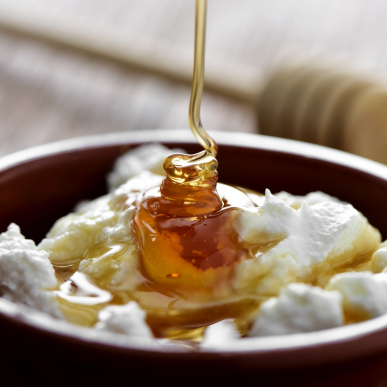Mató cottage cheese and honey, one of the most popular Catalan desserts
Mató is a typical Catalan fresh cheese, which differs from other cheeses because of its creamy texture and it is also much lighter. Its origin is medieval and it was traditionally made with goat's or sheep's milk. It is handmade by boiling the milk and clotting it with a vegetable ingredient like thistle flower or lemon juice, or an animal enzyme (rennet). The resulting product is filtered using a cloth in wicker or cane containers. This results in a white-coloured paste dough that is slightly sweet thanks to the concentration of lactose in the milk. Industrial manufacturing uses the same physical/chemical principle but uses pasteurised milk and high-capacity stainless steel tanks. It is eaten as a dessert, and the most traditional form is the one that uses honey to sweeten it, giving rise to mató cottage cheese and honey, two foods condemned to coexist in balance and harmony...
Did you know...
Mató cottage cheese should not be confused with recuit. In general, the most traditional mató was made and sold in the same way as Fonteta recuit today, with goat's milk and inside a rag. Traditional recuit, on the other hand, was made using sheep's milk and served in a ceramic bowl called tupí. However, mató is very rarely made with goat's milk today – most is made with cow's milk – and no one would dare sell them inside a rag anymore!
Allergens: dairy

